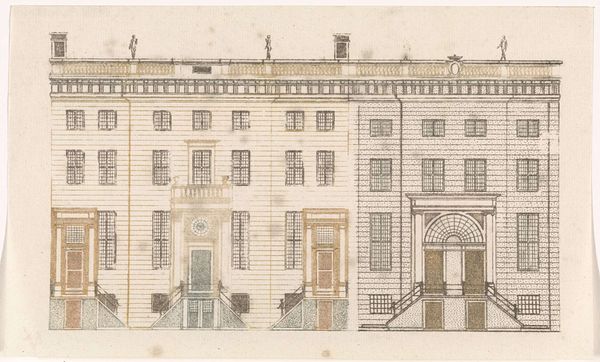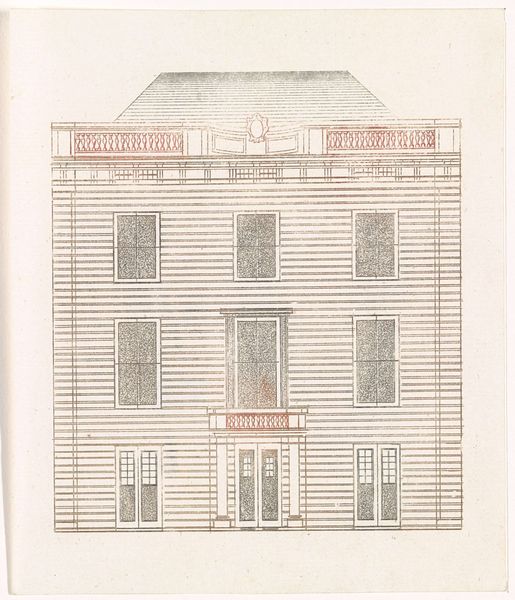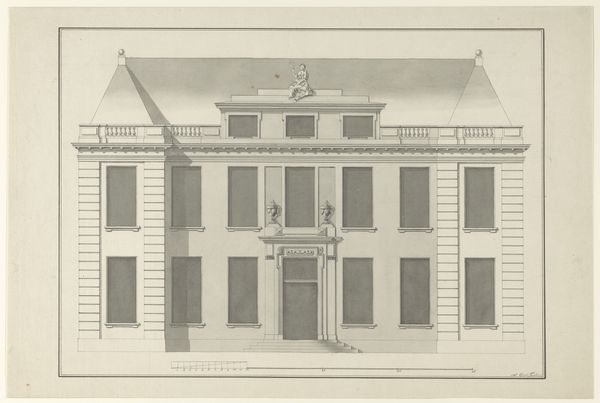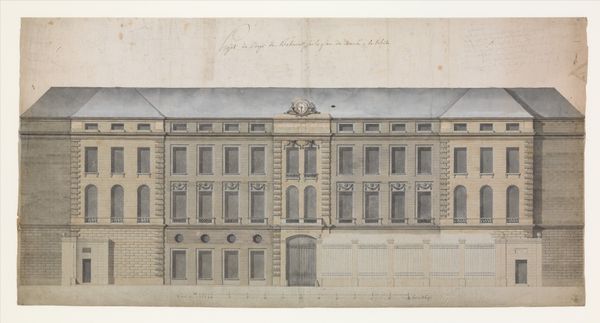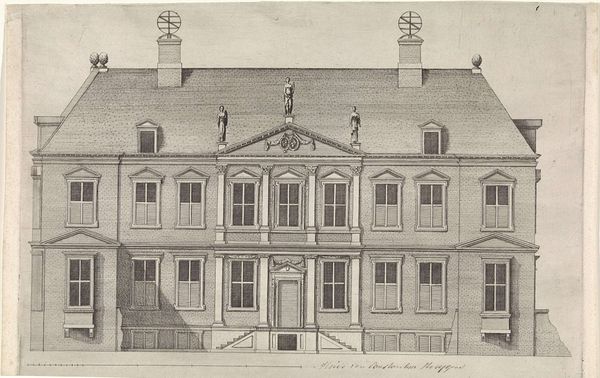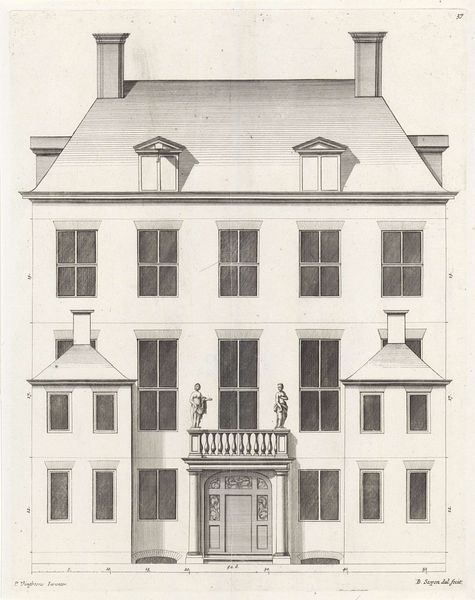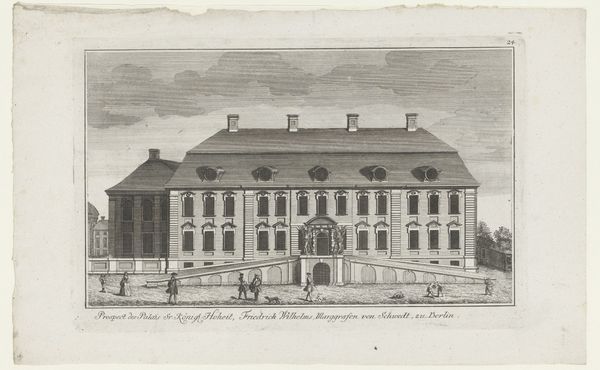
drawing, etching, paper, architecture
#
drawing
#
etching
#
etching
#
paper
#
cityscape
#
architecture
Dimensions: height 117 mm, width 176 mm
Copyright: Rijks Museum: Open Domain
Curator: This is a depiction of canal houses in Amsterdam. This etching, rendered in paper, presents houses 470 and 468 along the Herengracht between 1696 and 1706. Editor: My first impression is one of stark, almost severe, elegance. The façade feels monumental despite the limited details and soft hues, a bit like a stage set for lives of privilege. Curator: These houses existed during the Dutch Golden Age, when Amsterdam was at the heart of global trade. Ownership reflected a highly structured social order, especially along the canals. What seems elegant now, was underpinned by colonialism and wealth extracted across continents. Editor: Right, I notice how classical ornamentation feels almost like a performative aspiration here, almost like symbols adopted by the elite. The symmetrical windows, the rooftop sculptures... they borrow and project power through established imagery. Curator: Precisely! These features were not mere decoration. The rooftop statues, for example, would echo the homeowner's social standing or allegiance to classical ideals. It reinforces how space itself—and representation in this rendering—played into the power dynamics of that era. The lack of inhabitants feels representative of a hierarchy. Editor: I hadn’t considered the emptiness contributing so vividly. There’s almost a ghostly feel about the image—the architectural components remain but stripped of everyday life. Looking closely, there's a contrast between the almost uniform brickwork, yet each window frame exhibits slight unique imperfections. It highlights the tension between collective aspirations and individualized identity. Curator: We should acknowledge that these "imperfections" have a contemporary perspective. Today, many historic canals have evolved as commercial sites which often brings to focus questions around authenticity, commodification and sustainability. This image offers, perhaps unintentionally, commentary for our own time as we wrestle these issues. Editor: Yes, and those symmetries can represent both an aspiration for balance and, in another context, the repression of marginalized communities in public and social spaces, or whose very presence threatened existing social structures. So much, isn't it? Curator: Art so frequently holds contradictions. And, after all, it makes this glimpse of Amsterdam much more compelling than just a historical record. Editor: Indeed, far beyond an architectural diagram; an encoded visual.
Comments
No comments
Be the first to comment and join the conversation on the ultimate creative platform.
